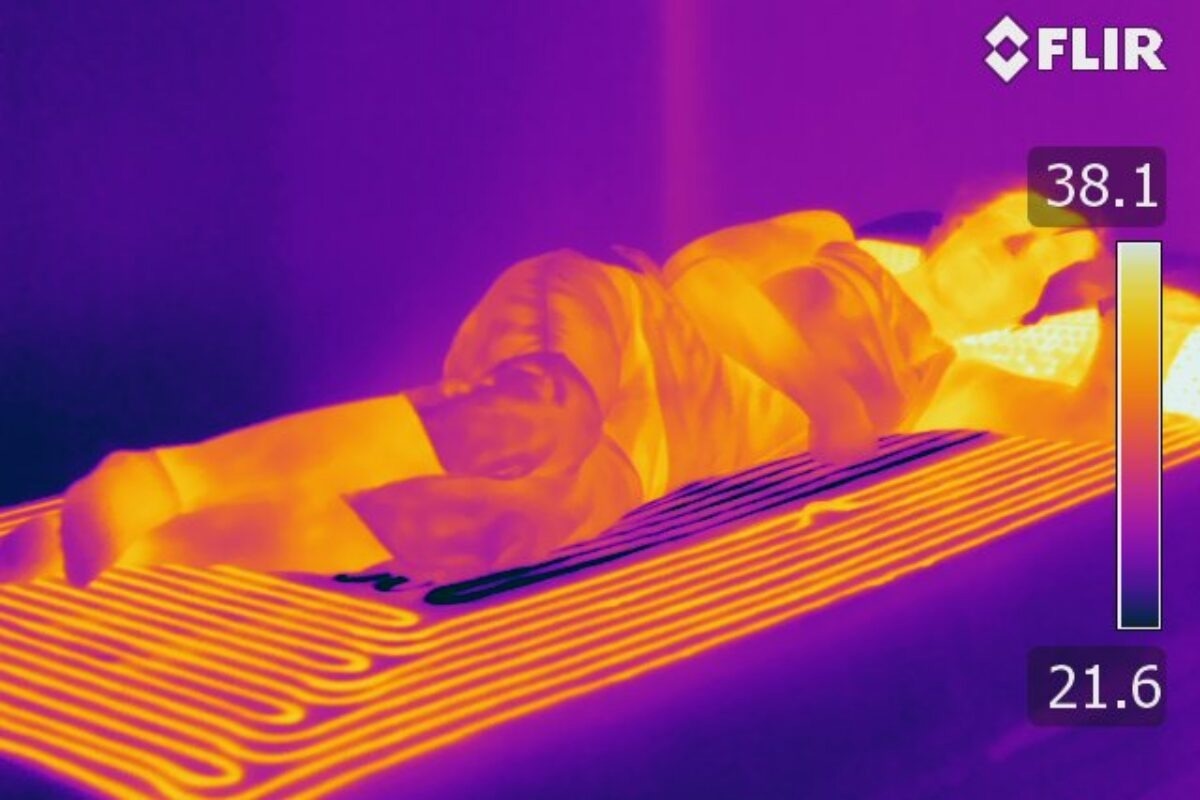When a person feels sleepy or alert, that sensation is controlled in part by the ebb and flow of a 24-hour rhythm of their body temperature. The University of Texas at Austin’s bioengineers have created a special mattress and pillow system that uses cooling and heating to signal to the body when it is time to sleep.

Image Credit: The University of Texas at Austin.
Sleep can be made possible when the body temperature falls at night as part of the 24-hour rhythm. This new mattress tends to stimulate the body to activate the sleepy feeling, thereby helping people fall asleep quicker and enhancing sleep quality.
We facilitate the readiness to fall asleep by manipulating internal body temperature-sensitive sensors to briefly adjust the thermostat of the body so it thinks the temperature is higher than it actually is.
Shahab Haghayegh, Research Fellow, Division of Sleep Medicine, Harvard Medical School and Brigham and Women’s Hospital
Haghayegh supported in guiding the development of the mattress at UT Austin while earning a Ph.D. in biomedical engineering. Haghayegh graduated in 2020.
The primary sensor that the mattress with a warming pillow targets is the skin of the neck, which serves as an important bodily thermostat for humans. The mattress is made to simultaneously warm the neck, hands, and feet while cooling the body's central regions. This increases blood flow, which helps the body release heat.
The scientists reported a proof-of-concept study regarding the special combination warming pillow plus cooling-warming, dual-zone mattress system in the Journal of Sleep Research. This looks at two versions of the mattress: one that makes use of water and another that utilizes air to manipulate the core temperature of the body.
The researchers tested the mattresses with 11 subjects, thereby asking them to go to bed two hours earlier compared to usual, a few nights utilizing the cooling–warming functions of the mattresses and other nights not.
The study discovered that the warming and the cooling–warming mattress helped them to fall asleep faster. This was nearly 58% faster than nights when they did not utilize the cooling-warming function, even in the hardest setting of an earlier bedtime.
Not only did decreasing internal body temperature considerably reduce the amount of time needed to fall asleep, but it also led to a considerably enhanced quality of sleep.
The project grew out of a larger objective in Kenneth Diller’s lab at the Cockrell School of Engineering to discover novel applications for thermal stimulation as a sleep aid. Diller is a specialist in heat and temperature regulation for therapeutic devices.
The scientists reported a study in 2019 that discovered taking a warm bath an hour or two before bed helped people fall asleep fastly and sleep better.
While similar, this project is more focused. The signal that it is time to sleep is sent when the body’s internal temperature drops at the appropriate circadian time. It made more sense to target a small number of key body regions that regulate heat dissipation and, subsequently, body temperature level rather than the entire body.
It is remarkable how effective gentle warming along the cervical spine is in sending a signal to the body to increase blood flow to the hands and feet to lower the core temperature and precipitate sleep onset.
Kenneth Diller, Professor, Cockrell School of Engineering, The University of Texas at Austin
Diller added, “This same effect also enables the blood pressure to fall slightly overnight, with the benefit of allowing the cardiovascular system to recover from the stress of maintaining blood flow during daily activities, which is highly important for long-term health.”
The team has a patent for the cooling–warming mattress and pillow technology and is looking for collaborations with mattress companies for them to be commercialized.
The other members of the group are Sepideh Khoshnevis and Michael Smolensky of UT Austin, Ramón Hermida of the University of Vigo in Spain, Richard Castriotta of the University of Southern California, and Eva Schernhammer of Harvard University.
Sleep Better and Faster with this Temperature Controlled Mattress
Video Credit: The University of Texas at Austin.
Journal Reference:
Haghayegh, S., et al. (2022) Novel temperature-controlled sleep system to improve sleep: a proof-of-concept study. Journal of Sleep Research. doi.org/10.1111/jsr.13662.